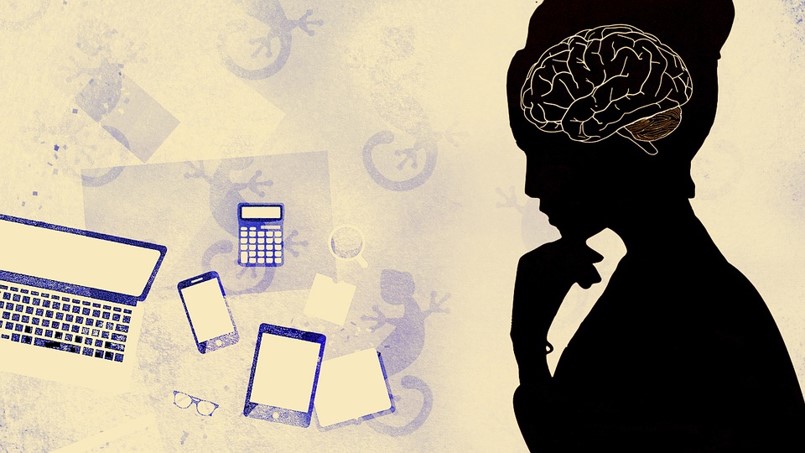

PhD Neuroscientist, Dr. Fabiano de Abreu Agrela, says that technology has evolved too fast for the evolution of our brain to keep up, and this may be the cause of one of today's biggest ills, anxiety.
Nothing intrigues the scientific community as much as the evolution and adaptation of the human brain, the most important organ of the body still holds many secrets and nuances that are still a matter of debate.
Recently, the book "Deconstructing Anxiety" by neuroscientist Judson Brewer presented a polemical perspective on brain functioning today, according to him, the brain, in its divisions of prefrontal cortex (new brain - rational) and more primitive parts of the organ (old brain - linked to the survival instinct), would not communicate properly, which would make the brain pay more attention to pessimistic scenarios, causing anxiety. In the book, he explains that anxiety is the result of a bug in our brain, which splits in two.
However, this position is not a consensus among experts, according to PhD neuroscientist Dr. Fabiano de Abreu Agrela, the relationship between these two parts of the brain does not explain the difficulties he faces in today's society in this way, but rather the pace of biological and technological evolution that do not occur at the same speed.
"It's not that there isn't a good connection, but the way there was an abrupt change related to technology and the current capitalist culture, in which our brain can't adapt, all this life we live, the technology and the virtual world, don't match the nature of our brain nor the time, damaging the connections in these two or more regions of the brain".
Biology X Technology
Since the great boom of technology, internet, smartphones, etc., a great race began where the ultimate prize was to have the most modern device, this generated huge advances to the point where a device became obsolete in a matter of months.
However, our body does not evolve with the same speed, it is a slow and slow process that takes several generations for its results to be observed.
This discrepancy between the speed of biological and technological evolution means that the human brain cannot keep up with the changes in the context in which it is.
According to a study published in the scientific journal "Proceedings of the National Academy of Sciences", it took animals about 24 million years to evolve from the size of a mouse to that of an elephant, while computers took just over 30 years to reduce their size from an entire room to the palm of our hands.
The anxiety cycle
"The case is not that there is not a good connection, we are damaging that connection, because anxiety works like a hang-up, the brain resorts, through the brain amygdala to a 'memory map' to identify similar situations and seek a solution in those memories."
"Then, to seek solutions to hang-ups, the brain resorts to a semantic "memory drawer" to the hang-ups and adjacent, to use them as an example for a better solution, which when constant, generates a negative atmosphere since we store fear/precaution memories for prevention, to get out of it, the brain seeks pleasure rewards, so the greater the anxiety, the greater the need for compensation. Social media, for example, is an easy way to reward. But the good feeling felt in one scenario, is not of the same intensity for the same scenario, needing different scenarios (situations), for greater intensities of these good feelings, becoming a vicious cycle that further increases the pendency. Harming the good connection between these regions in the brain and altering its anatomy".
Dr. Fabiano de Abreu also points out that it is this cyclical process that interferes with the connection between the limbic system -- a region linked to emotional decisions -- and the prefrontal cortex -- a region linked to rational and thoughtful decisions -- that is, these are not situations intrinsic to the brain, but about how we condition its functioning.
--
About Prof. Dr. Fabiano de Abreu
Prof. Dr. Fabiano de Abreu Agrela, is a PhD in neuroscience, MA in psychology, BA in biology and history; also a technologist in anthropology with several national and international trainings in neuroscience. He is director of the Centro de Investigaciones y Análisis Heráclito (CPAH), Scientist at the Martin Dockweiler University Hospital, Head of the Department of Science and Technology at Logos University International, active member of Redilat - La Red de Investigadores Latinoamericanos, of the scientific committee of Ciência Latina, of the Society for Neuroscience, the largest neuroscience society in the world in the United States, and professor at the universities of medicine at UDABOL in Bolivia, Escuela Europea de Negocios in Spain, FABIC in Brazil, research scientist at Universidad Santander in Mexico and member of APBE - Portuguese Association of Evolutionary Biology.
Source: T&B Petroleum/Press Office
Contact us